In anime, ryona リョナ typically refers to scenarios where a female character is defeated in a fight, getting beaten, captured, or otherwise harmed physically or psychologically in one way or another. It originates in female game characters' moans of agony sounding similar to moans of sexual pleasure, as in Resident Evil, Tomb Raider, and so on. Nowadays, ryona is a genre for works that focus on violence, too.
WARNING: this article contains images featuring violence, blood, and bruises. It's for informative purposes only. The author doesn't condone violence against women, men, asexual sentient minerals, etc.
Definition
Basically, ryona is a sort of violent pornography, except that the term is used to refer to all sorts of scenarios where characters get beaten, including such scenes found in anime made for general audiences.
Usually, you have the heroes and the bad guys, and if the series is violent enough, the bad guys will beat up someone, capture someone, maybe interrogate them with torture, lock them up in a dungeon, brainwash them, brutally murder them, or something like that.
When that happens, that's called ryona.(dic.pixiv.net)
More specifically, when that happens with a female character, with a heroine, that's called ryona.
In fact, it doesn't really matter if the girl is a heroine or a villain, if she gets beaten up, it's ryona.
Furthermore, there isn't really a need for there to be heroes and bad guys. It could be just bad guys and victims, e.g. bullying can count as ryona, domestic abuse can count as ryona, all sorts of bad stuff can count as ryona.
It boils down to: there's a girl, she is harmed, it's ryona.
Needless to say, this is somebody's fetish, which brings the question of whether scenes involving violence against female characters are pandering some fringe fetishism or an unavoidable consequence of having violence in a series.
"This is confusing! Is it sexist to hit you? Is it more sexist to not hit you? I mean, the line gets real *cocks pistol* blurry!" —Movie: Deadpool (2016).
It's not really possible to tell whether a series is deliberately trying to include a ryona scene, or it simply has scenes that fit the definition of ryona.
It's worth noting that ryona is an anime slang. It doesn't mean "violence" in Japanese, which would be bouryoku 暴力.
Reverse Ryona (gyaku-ryona 逆リョナ)
Normally, ryona refers to female characters being harmed. The term "reverse ryona," or gyaku-ryona 逆リョナ, refers to scenarios where a male character is harmed by a girl instead.
This follows a pattern of words that have genders reversed having a gyaku 逆 prefix, e.g. "reverse harem," gyaku haaremu 逆ハーレム.
Typically, such terms work when you have a male doing something to a female character, and the reverse term is the reverse situation, which means a male character hurt by a female character is gyaku-ryona.
Separately, otoko-ryona 男リョナ, "man/male/guy ryona," refers to situations where a male character is harmed, regardless of whether it's a girl harming them.(dic.pixiv.net)
Anime: Tenjou Tenge 天上天下 (Episode 2)
- Context: Souichirou was fighting another guy, when he lost and got beaten up so hard that he vomited.
As one would imagine, just like there are guys that like scenarios where female characters get harmed, there are also girls that like scenarios where male characters get harmed.
Common Scenarios
For reference, some examples of ryona.
Beat 'em Up
Series that feature any serious fighting often also feature ryona, since someone is going to end up with bruises, broken bones, scars, and the like, specially considering some characters have brutal powers, like electricity or fire-based.
Right: Cammy White, キャミィ・ホワイト
Anime: Street Fighter IV: The Ties That Bind, Aratanaru Kizuna ストリートファイターIV新たなる絆 (Movie)
- Context: ouch.
hiropin ヒロピン
The term hiropin ヒロピン means "heroine pinch," hiroin pinchi ヒロインピンチ. In other words, a heroine, or maybe hero, being in a pinch, facing danger, specially in a situation she can't get out of on her own.
Anime: Ninja Slayer From Animation, ンジャスレイヤー フロムアニメイシヨン (Episode 12, Stitch)
- Context: Nancy Lee gets captured and tied up, specially in a:
- hishi shibari
菱縛り
Diamond [rope] binding.- Not to be confused with turtle-shell.
- See shibari 縛り for details.
harapan 腹パン
A harapan 腹パン is a "belly punch," which is a common and rather violent attack used in anime with fighting.
Anime: Akiba's Trip The Animation (Episode 1)
ryona no kane リョナの鐘
The term ryona no kane リョナの鐘, literally a "ryona's bell," refers to tying someone to a large bell, and hitting them, often on the stomach, with a wood log, thus ringing the bell, repeatedly, traditionally exactly 108 times. Illustrations featuring this scenario are generally drawn around the new year.
If this sounds bizarrely specific to you, that's because you're a missing a piece of culture:
The joya no kane 除夜の鐘, "new year's bell," is a Buddhist tradition in Japan about ringing a large bell 108 times on the night of new year's eve, because there are 108 sins. The Buddhist tradition doesn't include tying someone to the bell.
Torture
When a heroine—or any character, e.g. a spy—is captured by the enemy, hiropin, sometimes they're tortured for all sorts of reasons, like for information, or just to send a message, like "we captured your friend, do this or she shall die! MWAHAHAHAHAHA" and stuff like that.
Virtually all sorts of torture scenes count as ryona, but you wouldn't call them ryona, because you can just call them "torture," goumon 拷問, instead, like a normal person would.
Anime: Aldnoah.Zero, アルドノア・ゼロ (Episode 8, Stitch)
Some related terms:
- sankaku mokuba
三角木馬
Triangular wooden horse.- Historically, an actual torture device which was used on women, nowadays a BDSM device.
- mizuzeme
水責め
Water-torture.- Any water-related torture, drowning, waterboarding, etc.
Right: Hanazono Yurine 花園ゆりね
Anime: Jashin-chan Dropkick, 邪神ちゃんドロップキック (Episode 5)
- soroban-zeme
算盤責め
Abacus torture.- See ishidaki 石抱き for details.
Psychological
Sometimes, psychological harm counts as ryona. For example:
- Immense distress, like from long-term confinement in a cell, solitary, etc.
- Fear for what's about to happen.
- Trauma for what has happened.
Some related terms:
- seishin
精神
Psyche. Mind. - seishin-teki
精神的
Psychological. Mental. - seishin-teki na dameeji
精神的なダメージ
Psychological damage. Mental damage.
Anime: Kono Subarashii Sekai ni Shukufuku wo! この素晴らしい世界に祝福を! (Episode 5)
- torauma
トラウマ
Trauma. - shisshin
失神
Fainting.
Anime: Goblin Slayer, ゴブリンスレイヤー (Episode 1, Stitch)
- shikkin
失禁
Incontinence. (e.g. peeing in fear.) - kyouki
狂気
Insanity. - mentaru
メンタル
Crazy person. (colloquial.) - youji taikou
幼児退行
Infantile regression.- Mental illness: when an adult regresses to child or baby mental age.
- May include using one's own name as first person pronoun.
- utsurome
虚ろ目
Vacant eyes.- They're the ones drawn without a spark.
- See "rape eyes" for details.
Brainwashing
When characters are captured, sometimes they're brainwashed instead of tortured, which also counts as ryona.
The word for "brainwashing" in Japanese is sennou 洗脳, the meaning of the kanji being "to wash," arau 洗う, and "brain," nou 脳. Another relevant term is:
- aku-ochi
悪堕ち
"Falling to evil." (literally.)
Turning into a villain. In the sense falling from a high status (noble, good, virtuous) to a low one (evil).
I recommend you to not Google it because of spoilers, but one infamous example of brainwashing can be found in the third season of Danganronpa ダンガンロンパ.
Typically brainwashing is done through hypnosis-like means, but in anime magic is also a common means. In particularly, it's an adult trope for characters to get brainwashed simply by being marked with a spell.
See womb tattoo for details.
Monsters
Some ryona features monsters harming characters, specially monsters from games, the enemies you kill in Castlevania, etc. and, therefore, can be just a plain old animals, like a dog, or wolf, or goblins, orcs, trolls, slimes, monster girls, mythological creatures, science fiction creatures, aliens, machines, robots, zombies, and so on.
These non-human creatures accompany even more inhumane ryona, like:
- Being eaten alive by a monster or animal. Also known as "vore" in the west.
- Being impregnated by something that is not human and give birth to its child.
- See also: Goblin Slayer.
- To be a part of a laboratory experiment by a sadistic mad scientist.
- To be dissected alive by aliens.
- To be turned into stone, like by Medusa or something.
- sekika
石化
Petrification.
- sekika
- To be frozen alive by an ice attack, burned alive by a fire attack, or simply killed alive by an electric attack, poison attack, acid attack, etc.
As you can see, that's a lot of "bad ends," baddo endo バッドエンド.
Movie: Alien
- Context: Facehugger saying "have my babies!!!"
Since monsters include machines, and machines have no will of its own, it's safe to say traps that harm people also count as ryona, e.g. holes with stakes in them, bear traps, that sort of stuff.
On the other hand, if a vase falls on someone's head by chance that doesn't count as ryona. That's just awful luck.
Sometimes, it's the monster that's suffering harm in ryona:
- Zombies (or zombie-turned girls) being eaten by larvae.
- Deities, angels, fairies, etc. getting sealed by mediums.
- See: Ghost Busters!
marunomi 丸呑み
The term marunomi 丸呑み means "swallowing whole." It's a ryona scenario where a character is eaten whole by some monster. The peculiarity of this scenario is that you don't die simply by being swallowed.
That is, it's different from being eaten, masticated, by some animal or huge titan. The character ends in the monster's belly still alive. And probably dies from being digested from stomach acid, or, if lucky, survives after cutting through from inside.
Anime: Made in Abyss, メイドインアビス (Episode 9, Collage)
- Context: Riko リコ is swallowed whole by a weird purple monster, ending up in its stomach together with other stuff it ate.
In English, this sort of stuff is called "vore," in which there's a dichotomy between "soft vore," where the eaten character isn't injured, and "hard vore," in which the eaten character is harmed.(wikifur.com)
Naturally, series that feature soft vore don't count as ryona.
Anime: Hisone to Maso-tan ひそねとまそたん (Episode 1)
- Context: in this anime, characters pilot dragons by getting inside their stomach.
Robotic Destruction
When the non-organic, robotic body parts of androids, cyborgs, and robots are destroyed, that also counts as ryona.
This a distinct type of ryona because robots two reasons.
First, robots don't (necessarily) feel pain. While other types are rather sadistic, about inflicting pain onto others, in this case it's exclusively about the destruction of the body.
Second, robots don't have flesh, they have inorganic body parts, so unless the series is doing something very extreme with a robot's body, the audience is unlikely to interpret it as body horror, as disturbing imagery, no matter how destroyed the robot gets.
Game: Megaman X5, Rockman X5, ロックマンX5
- Context: despite missing an arm, lower torso, and with a hole through his chest, Zero ゼロ still fights with a smile in his face.
Given Megaman X5 came out 21 years ago, in 2000, I suppose I need more recent example:
Anime: One Punch Man, ワンパンマン (Episode 2)
- Context: for some reason, Genos gets ryona'd a lot.
Another amazing thing about robots is that they're almost immortal: their body parts can be re-made, so even if they lose a couple of limbs in battle, they don't flinch. They don't hesitate in sacrifice them to win a fight.
- In Ghost in The Shell, there's a particularly epic scene where the protagonist, a brain (ghost) controlling a body (shell), rips her arms in half trying to lift a heavy object. The imagery was disturbing in spite of her not having flesh, which is kind of amazing in its own way.
The scenario is associated with robots because in anime robots are the most common type of creature that can do this sort of stuff. However, it isn't exclusive to robots.
Spirits, poltergeist, manipulating non-organic objects like dolls, golems, as if it were their bodies, are also pretty much the same thing as a robot, in that they don't feel pain, have no need to flinch, replaceable body, etc. So ryona involving destroying those objects is the same sort of ryona.
Although unlikely to exist, any other creature whose body fits those criteria falls into the same category.
Right: Morganite モルガナイト
Anime: Land of the Lustrous (2017), Houseki no Kuni 宝石の国 (Episode 1, Collage)
- Context: these are precious gems drawn a cute anime girls, their bodies are literally made out of rock. When they break in a fight, you just literally glue the rock back and they're as healthy as new.
A similar but different situation is petrification. Mythical creatures like the Medusa are said to turn people into stone. This means their blood, too, is turned into stone. So they don't bleed and they, probably, don't feel pain anymore. They're just statues now.
Consequently, cutting off a flesh character's arm and cutting off a petrified character's arm end up being two different kinds of arm-cutting.
- Context: if they weren't statues, this would be a bloody gruesome mess that would look like hell on Earth. Fortunately, they're statues made of stone, so it only looks like heck on Earth.
vs. guro
The terms ryona and guro グロ overlap somewhat. The difference between ryona and guro is that ryona is about harm, while guro is about body horror and other "grotesque" imagery, including, but not limited to, gore and death.
- If a character is in a fight and the enemy slashes their arm off, that's both ryona and guro, since it's gore.
- A dismembered body found somewhere is guro, but not ryona.
- A character that's hurt from a fight, but not gruesomely injured, is only ryona and not guro.
Basically, depending on how brutal a fight is depicted:
- It doesn't count as ryona if it isn't violent enough.
- It counts as ryona, but not guro, if doesn't feature gore.
- If counts as both ryona and guro if it features gore.
Only the most violent cases end up counting as both, as ryona leads to guro.
Anime: Hunter x Hunter (2011) (Episode 84, Stitch)
- Context: a guy is a captured by enemy monsters, who shove needles inside his brain to extract information from him, counting as both ryona and guro.
Anime: 学園黙示録 HIGHSCHOOL OF THE DEAD (Episode 1, Stitch, Cropped)
- Context: a girl is fails run run away from zombies and gets eaten alive, counting as both ryona and guro.
Genre
The term ryona also refers to a genre that focuses on characters being defeated in fights, captured, and harmed, specially in drawn pornography (hentai). Note that these only necessarily feature violence, not nudity or sexual intercourse.
Since there are ryona scenes in lots of series, for something to be of the ryona GENRE I guess it would have to be mostly or entirely about ryona. In particular depicting violence more brutally than the typical anime series.
Games
One type of work that's indeed in the ryona genre are ryona games, also called ryona geemu リョナーゲム, or ryonagee リョナゲー. These are generally self-published doujin games focusing on ryona scenarios.
Fighting games like Street Fighter and Mortal Kombat naturally feature ryona all over the place—no matter what character you pick you'll probably have to beat up Chun-Li, or Cammy, or some other girl in order to complete the game—but those aren't in the ryona genre.
Those are normal games that just happen to feature scenarios you may call ryona.
For reference, an example of a ryona game:
Game: CrackleCradle (Stage 3, Boss Fight)
- Context:
what is even the purpose of the lab???
Since a ryona game doesn't necessarily have to have anything sexual in it, it again brings the question of a game that seems particularly focused on brutally killing its protagonist counts as belong to the ryona genre or not.
For example, two games by Playdead, titled Limbo and Inside, feature a boy protagonist that gets brutally killed by monsters, machines, animals, in all sorts of disturbing ways. I'm not really sure how these are significantly different from CrackleCradle, so they could be all part of the same genre.
Origin
The origin of the term ryona is the internet, specially, the Japanese board 2ch, which is kind of like 4chan, but in Japanese.(鳥山仁 & 九瀬足波, 2013:54, as cited in ja.wikipedia.org)
In this board, there was once a game-related thread entitled "kyaa" moeru himei no geemu "an'" 【きゃあっ】萌える悲鳴のゲーム【あんっ】, meaning a scream, kyah!, followed by the phrase "games with screams you like," see moe 萌え for the verb moeru, and ending with a moan, "ahn!"
NSFW (adult) link: 【きゃあっ】萌える悲鳴のゲーム【あんっ】., accessed 2019-03-27.
In this thread, posted in 2003, users talked about games where the voice actors, the characters screamed in pain and discomfort, and it might have sounded like moans of pleasure instead.
Then the 652th post, posted in 2003-08-20, drops this bomb:
バイオやRPGなどで喘ぎ声をあげながら死んでいく光景で
自慰する行為を猟奇オナニーと命名する
baio ya RPG nado de aegigoe wo agenagara shindeiku koukei de
jii suru koui wo ryouki onanii to meimei suru
"[I] name the act of masturbating to scenes of [characters] dying while gasping in RPG and Resident Evil, etc. 'jacking off seeking the bizarre.'"
(yes, seriously, someone said this.)
Note: baio バイオ is short for baiohazaado バイオハザード, the Japanese name for Resident Evil. This "seeking the bizarre" thing, ryouki, is about having attraction for abnormal things. In this case, the post meant that masturbating to horror games is abnormal, not that the games they were masturbating to contained anything abnormal.
The next post, 653, says this ryouki onanii is a bit too dark. 654 says that's a given since you're masturbating to someone dying. Asking if the "final answer" is going to be that masturbating to screams is himei onanii and to characters dying ryouki onanii.
657 decides to abbreviate the term that was created just 5 posts before, saying ryonanii リョナニー should be the abbreviation of ryouki onanii.
Since onanii suru オナニーする means "to masturbate," then "to masturbate to [characters] dying" would be ryonanii suru リョナニーする, I guess, but, instead, it was made into a verb through a ~ru ~る suffix: ryonaru リョナる. So ryonatteru リョナってる would be a conjugation meaning "ryona'ing" or something like that.
Finally, people started saying just ryona リョナ as a noun. And, later, it became a genre.
Degeneracy aside, many gamers agree: the moaning of female characters in games can be a bit misleading.
- Context: a review of Tomb Raider (2013).
ryonaraa リョナラー
Someone who likes ryona is called a ryonaraa リョナラー, "ryonarer," in Japanese.
This is similar to how someone who likes "furry art," kemono ケモノ, is called a kemonaa ケモナー, "kemoner," a "furry."
Surprisingly, not only does such term exist, but it seems there are enough people into this stuff to create their own convention: the Ryonaket, ryonaketto りょなけっと.
A ryonaraa isn't the same thing a mere sadist, do-S ドS. It's easy to assume if you like scenes with guys beating girls, you're a guy self-inserting into the assailant, but there are also girls self-inserting as the victim.
- Autassassinophilia.
Arousal to the risk of being killed.
There are are guys self-inserting into the guy beaten by girls in gyaku-ryona, after all, yandere ヤンデレ is a thing, and there are fujoshi liking gyaku-ryona with guys beating other guys, fueling their BL shipping fantasies.
References
- リョナ - Pixiv, accessed 2019-03-27.
- 逆リョナ - dic.pixiv.net, 2021-05-23.
- リョナ - Wikipedia, accessed 2019-03-27.
- Vorarephilia - wikifur.com, 2021-05-23.
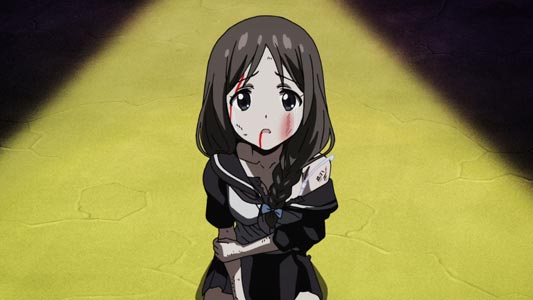

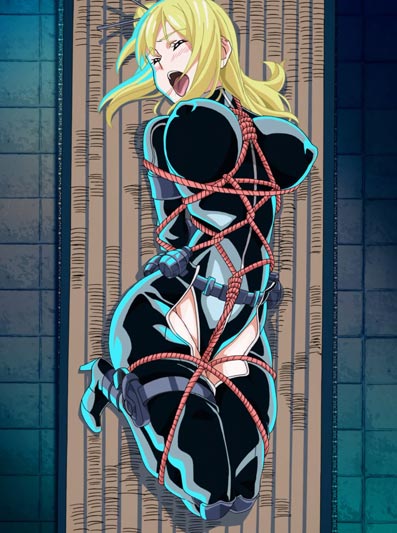
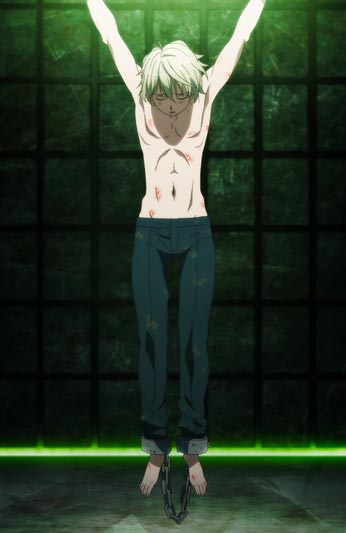
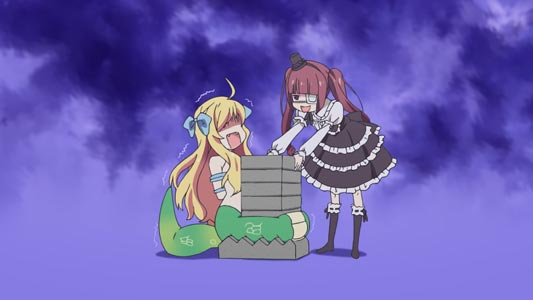
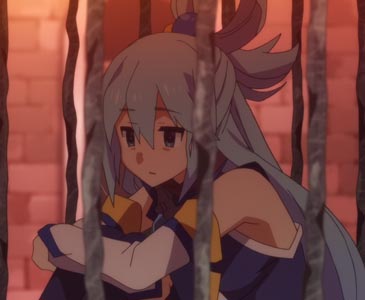
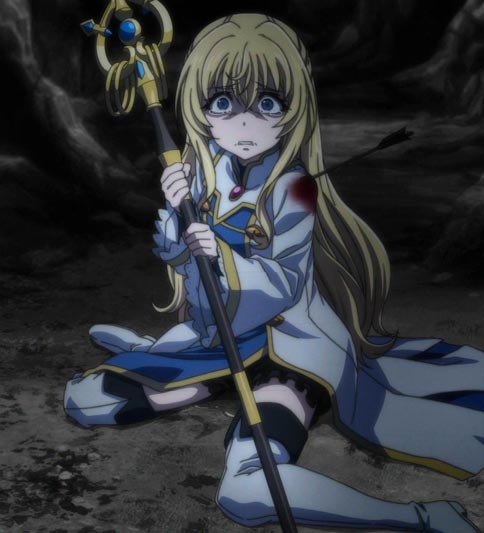
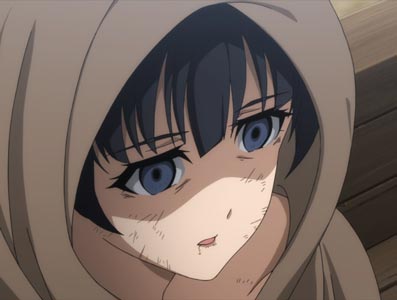
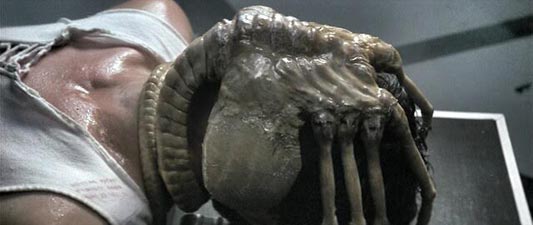
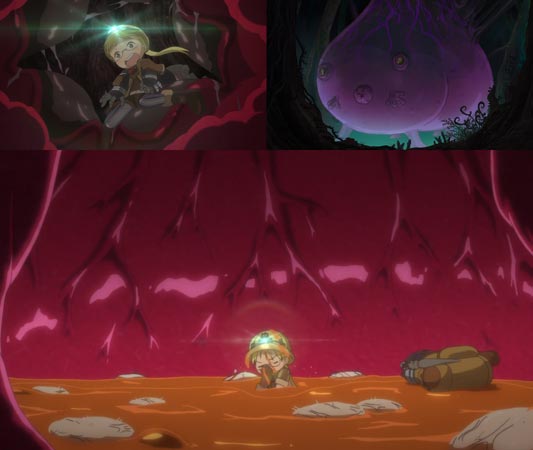
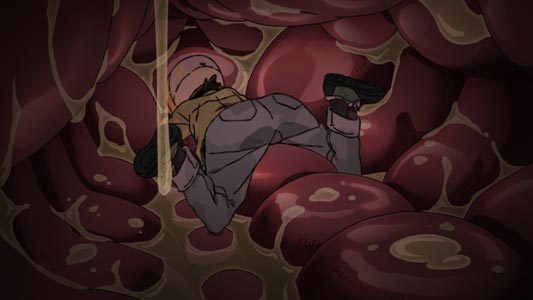
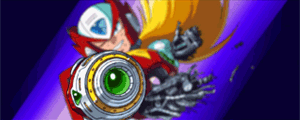
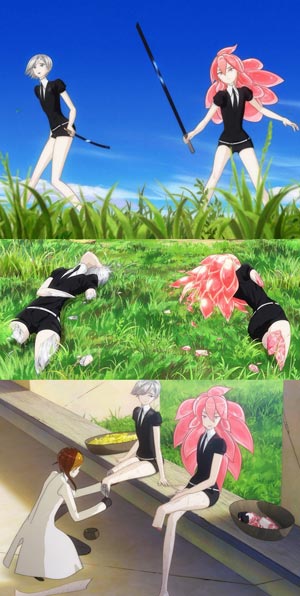
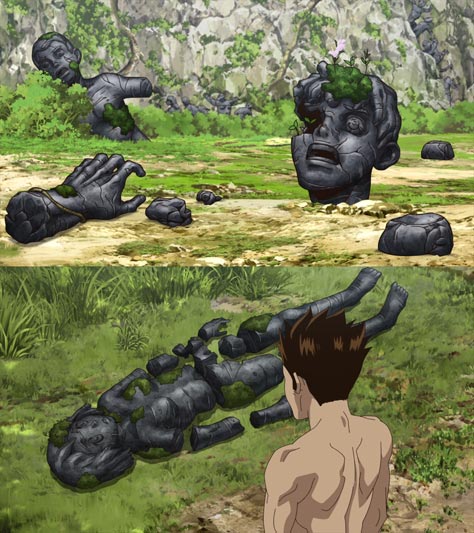
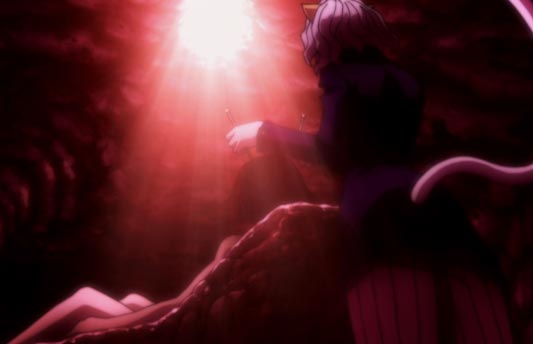
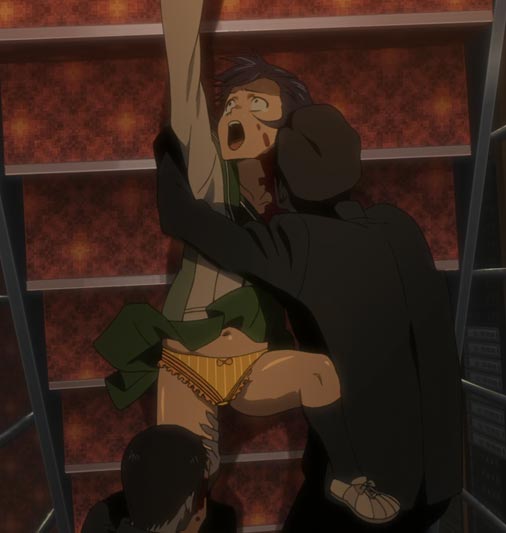
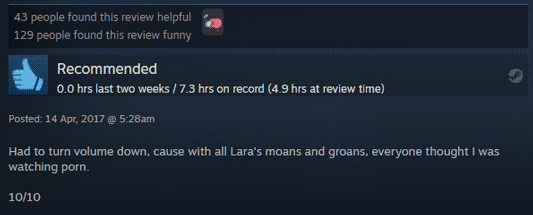
No comments: